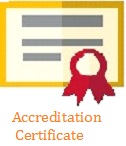Land Suitability Study in Ultisols for Soybean Based on Soil Fauna
Abstract
Evaluation of land suitability for soybean by involving the presence and biodiversity of soil fauna has been conducted. The research was done on thecenter of soybean plantations in Ultisols soils in Banten, Lampung, and Lahat (south Sumatera) Provinces. The objective of research was to determine the interaction between soil fauna diversity in Ultisols soil and productivity of soybean. The research used a Survey Method. Every location was divided into three categories of vegetation performance, such as, less vegetation, average vegetation, and very fertile vegetation with two replicates. The chemical, physical, and biological properties of soils from every unit sampling were analyzed. The results showed that nutrient and chemical properties of soil which directly influenced the growth and production of soybean was P-potential, P-available, K-available, B (Boron), Ca and pH; the physical properties were pores drainage, pores rapid drainage, soil water content, and soil permeability. The presence of earthworm did not have direct effect to soybean, except as the 3th between variables, meaning that the presence of earthworms affected soil physical properties, soil physical properties affected nutrient availability, nutrient availability affected the biomass and yield of soybean.
Keywords: Earthworm, land suitability, soil fauna, soybeans, Ultisol
[How to Cite: Anwar EK, R Nurlaily, Sarmah and J Purwani. 2013. Land Suitability Study in Ultisols for Soybean Based on Soil Fauna. J Trop Soils 18 (3): 231-239. Doi: 10.5400/jts.2013.18.3.231]
[Permalink/DOI: www.dx.doi.org/10.5400/jts.2013.18.3.93]
REFERENCES
Alexander M. 1977. Introduction of Soil Microbiology. John Wiley and Sons, New York-Chichester-Brisbane-Toronto-Singapore, 467 p.
Anwar EK. 2007. Pengaruh Inokulan Cacing Tanah dan Pemberian Bahan Organik terhadap Kesuburan dan Produktivitas Tanah Ultisols. J Trop Soils 12: 121-130 (in Indonesian).
Anwar EK, RDM Simanungkalit, E Santoso and Sukristiyobubowo. 2010. Population density and distribution in wetland earthworm organic farming systems, semi organic and conventional. Biota, J Biol Sci 15: 113-117.
Ayuke FO,L Brussard, BVanlauwe, J Six, DK Lelei, CN Kibunja and MM Pulleman. 2011. Soil fertility management: Impacts on soil macrofauna, soil aggregation and soil organic matter allocation. Appl Soil Ecol 48: 53-62.
Balai Penelitian Tanah. 2005. Petunjuk Tekniks Analisis Kimia Tanah, Tanaman, Air, dan Pupuk. Badan Penelitian dan Pengembangan Pertanian Departemen Pertanian. Bogor, 136 p. (in Indonesian).
Dayan A, 1979. Introduction Methods Statistik. Jilid I, LP3ES, Jakarta (in Indonesian).
Djaenudin D, H Marwan, H Subagjo and A Hidayat. 2003. Technical Guidelines for Agricultural Land Evaluation. Research Institute for Soil, Puslitbangtanak, Agricultural Research Agency, 154p.
Djaenudin D, H Marwan, H Subagyo, A Mulyani and N Suharta. 2003a. Kriteria Kesesuaian Lahan untuk Komoditas Pertanian. Versi 3. Pusat Penelitian Tanah dan Agroklimat, Bogor (in Indonesian)
Drapper N and H Smith 1976. Applied Regression Analysis, Second Edition. WileyIntersciencea division of John Wiley & Sons. Inc. 605 Third Avenue, New York N.10158
Edwards CA and JR Lofty. 1977. Biology of Earthworms. A Boo Halsted Press, John Wiley & Sons, New York. 333 p.
Giller KE, MH Beare, P Lavelle, AMB Izac and MJ Swift. 1997. Agricultural Intensification, Soil Biodiversity, and agroecosystem function. Appl Soil Ecol 6: 3-16.
ICALRRD [Center for Agricultural Land Resources Research and Development]. 2006. Soil Physical Properties and Methods of analysis. Agency for Agricultural Research and Development Department of Agriculture. 282p.
ICALRRD [Center for Agricultural Land Resources Research and Development]. 2007. Soil Biology Analysi Methods. Agency for Agricultural Research and Development Department of Agriculture.
Kilowasid MLH, TS Syamsudin, FX Susilo and E Sulistyawati. 2012. Ecological Diversity of Soil Fauna as Ecosystem Engineers in Small-Holder Cocoa Plantation in South Konawe. J Trop Soils 17: 173-180.
Lal R. 1995. Sustainable Management of Soil Resources in the humic Tropics. United Nations University Press, Tokio-New York-Paris, pp. 25-29.
Rao S. 1994. Soil microorganisms and plant growth. Publisher University of Indonesia, 354 p.
Soil Survey Staff. 1998. Keys to Soil Taxonomy. 8th Edition. USDA Natural Resources Conservation Service. Washington DC
Subowo G, I Anas, G Djajakirana, A Abdurachman and S Hardjowigeno. 2002. Pemanfaatan cacing tanah untuk meningkatkan produktivitas Ultisols lahan kering. J Tanah Iklim 20: 35-46 (in Indonesian).
Subowo G. 2010. Peranan biologi tanah dalam evaluasi kesesuaian lahan pertanian kawasan mega diversity tropika basah. Balai Besar Litbang Sumberdaya Lahan Pertanian. Badan Litbang Pertanian. J Sumberdaya Lahan 4: 93-102 (in Indonesian).
Subowo G. 2011. Penambangan Sistem Terbuka Ramah Lingkungan dan Upaya Reklamasi Pasca Tambang untuk Memperbaiki Kualitas Sumberdaya Lahan dan Hayati Tanah. J Sumberdaya Lahan 5: 83-94 (in Indonesian).
Zangarle A, A Pando and P Lavelle. 2011. Do earthworms and roots cooperate to build soil macroaggregates? Geoderma 167-168: 303 -309.
Keywords
Full Text:
PDFDOI: http://dx.doi.org/10.5400/jts.2013.v18i3.231-239
Refbacks
- There are currently no refbacks.
INDEXING SITE
This work is licensed under a Creative Commons Attribution 4.0 International License.

















